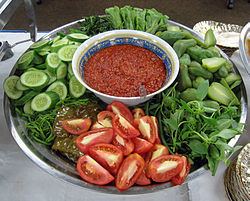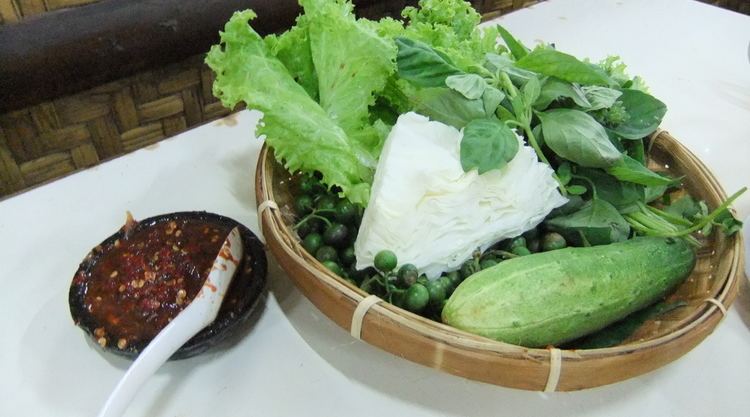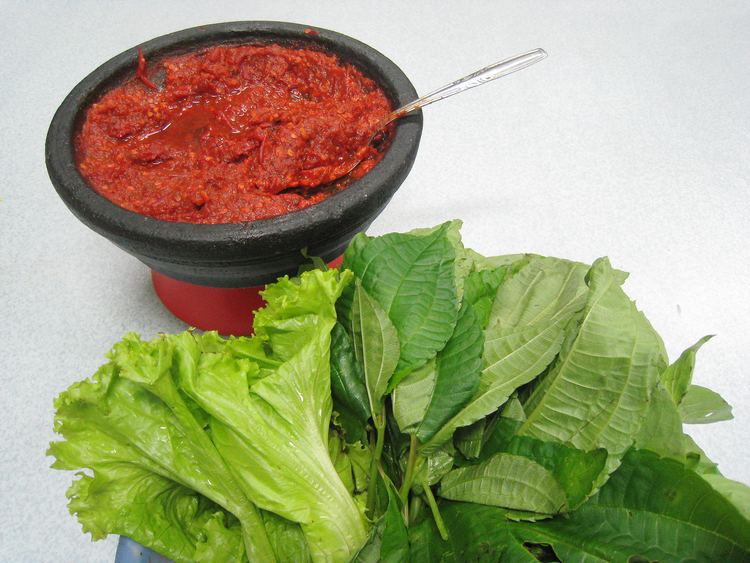Alternative names Lalap | ||
 | ||
Serving temperature Cold or room temperature Similar Sambal, Ayam goreng, Vegetable, Ayam bakar, Lemon basil | ||
Lalab or lalap is a Sundanese raw vegetable salad served with sambal terasi. It originated from West Java, Indonesia. Originally, it was made from any available edible young leaves and raw vegetables known by Sundanese since ancient times. Today, though, most lalab consists of sliced cabbage, cucumbers, lettuce, green beans, yardlong beans, tomatoes, leunca, lemon basil, spinach, water spinach, cassava leaves, papaya leaves, chayote, and small, green eggplant. Sometimes, other exotic vegetables also are used, such as green, stinky petai and jengkol bean. Although most lalab vegetables are only washed in cold water and served raw, some boiled, steamed and fried variations are also available; for example, petai green beans can be served either raw or fried, while labu siam (chayote), water spinach and cassava leaves are usually served boiled.

The dressing for this salad usually is sambal terasi served directly from the stone mortar as a spicy dipping sauce for these assorted raw vegetables.

Today, lalab is popular throughout Indonesia. It is usually served as vegetable side dish next to the main course, such as ayam goreng (fried chicken), ayam bakar (grilled chicken), pepes, pecel lele (fried catfish), fried gourami, and many other ikan goreng (fried fish) or ikan bakar (grilled fish).

Nutrients

Lalab is rich in vitamins, minerals and fiber. Daily consumption of fresh vegetables is good for reducing cholesterol levels and improving digestive health. Vegetables are also rich in antioxidants, which contribute to fighting free radicals, and have antiaging and anticancer properties. Several plants used in lalab also are believed to have certain medicinal properties.
